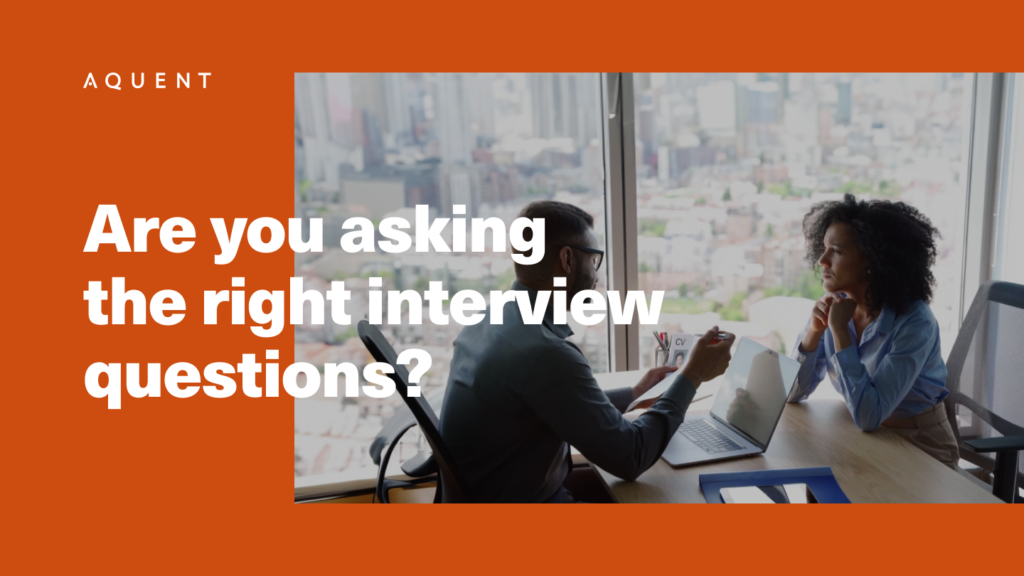A question for hiring managers: How long is your interview process? It’s crucial that you get it right to attract the best people.
Did you know that a quarter of job seeker applicants drop out at the interview stage?
You could be missing out on hiring great talent because of your interview process
It’s the perfect time to hire, yet even in this employer-led market, 43% of businesses are struggling to hire, and 36% can’t fill their vacancies in under a month.
Where do businesses usually go wrong in their interview process?
- Too many interview rounds
- Repetitive interviews
- No transparency with salaries
- Taking too long to give feedback
These are all red flags for candidates.
If you can’t organise a few interviews properly, what will it be like trying to get a big project across the line?
People will lose interest or will crack on with other opportunities.

Here's how hiring managers can stay on track with their interview process
Uh oh! Here comes some self-promotion. Building a relationship with a recruiter whom you trust will save you time and stress. They will:
- Send you a small shortlist of pre-screened talent who align with your values
- Schedule interviews
- Coach applicants throughout the process
- Keep applicants updated and engaged
- Manage offer negotiations, ensuring your salary is competitive
- Guide candidates through onboarding as they settle in
What’s not to love?
Anyway, for whoever’s still reading, let’s start with the basics.
You only need a couple of interviews unless it's a senior hire.
- 2 rounds for junior to middle-management roles
- 3 rounds for senior leadership hires as there's usually a meeting with the c-suite
Internal hiring options
Complete an internal search before you look externally. It’s frustrating for candidates if they commit time and effort to go through an interview process, maybe even complete a task, before finding out you’ve gone with an internal hiring option. This could also save you the time, stress and cost of advertising externally.
Interview scheduling
In your recruitment briefing, block out times in all interviewers’ diaries. The week after next should be enough time to get a shortlist.
Scheduling apps like Calendly allow access to everyone’s availability, taking the hassle out of trying to line up multiple diaries. What’s even easier is to embrace AI. Tools like Goodtime can automate scheduling, reminders, and even interview updates and feedback to keep applicants engaged. A major upside to using AI is nobody getting ghosted, even if the feedback is coming from our new robot overlords.
Avoid duplicate interview questions
Stop going around in circles. Just like you don’t want to hear an applicant waffling or using the same examples in their answers, they don’t want to be asked the same questions by a different stakeholder in the next round. Aligning diaries before you recruit is key to a lean process. If that’s not possible, LLMs like Gemini can transcribe your meetings and provide summaries for you to share with the team.
Online vs In-person
Online interviews have been around since Covid. They keep things moving, but you need to have the right balance. Having a Zoom meeting with someone to see if you’re on the same page saves everyone time, but this should be followed up with an in-person meeting unless the applicant has accessibility issues. Getting someone into the office builds rapport, gets buy-in, and allows them to meet the team and check out the commute. This will also reduce dropout rates when onboarding.
Being proactive and checking in about accessibility is a win-win as it’s the right thing to do, but it also reflects a welcoming and inclusive culture.
Interview questions
Asking the right questions to get what you need the first time around keeps your process punchy. A blend of conversational and behavioural questions is a good approach. You’ll know the key skills and experience that you need, but AI can help you standardise the process and avoid unconscious biases. Enter the job description into Gemini or ChatGPT and prompt it to produce 10-15 interview questions and refine the results. You can go one step further and use the applicant’s profile (bearing in mind their data privacy) to generate personalised questions.
If you want to go the whole nine yards, AI apps like hirevue can tailor interviews in real-time and provide recommendations, reports and insights.
Tasks during your interview process
Tasks are the perfect way to gauge creativity and practical skills and get commitment from applicants. They can also leave a sour taste if not done properly.
For non-technical roles, setting a task after the 1st round to be presented back in the 2nd round is ideal. For technical roles, live tests are becoming more popular to reduce the risk of cheating.
Candidates have told me they felt a task they completed was just generating free ideas for that business, which has ethical issues but also leads to a poor reputation in the market. So, you need to be careful.
Keep it brief and explain your reasoning behind it. A creative task is there to see how someone solves problems and what their way of working is. The results shouldn’t be important.
An amazing option is to pay applicants for their time. Half a day's rate won’t affect your business in any way, but it’s a massive green flag. Although, I’ve only seen this example in a humblebrag LinkedIn post, so it could be a myth!
Feedback & Offers during your interview process
Regular and transparent feedback is all people want. I think candidates can swallow not hearing back from a job application, but if they’ve taken the time to interview, then it's crucial to give them personalised feedback.
Final Round -> Verbal Offer -> Contract
The time it takes for this stage of your interview process is critical. People having to wait days (or even weeks in some cases!) to get an offer or a contract is a nightmare. There are only so many check-ins a recruiter can do before candidates get cold feet.
Having the salary signed off before you advertise and offering a contract that’s ‘pending reference checks’ saves valuable time. HR or the Talent Acquisition team should prioritise making the back-end contract process as streamlined as possible.
Sometimes, you can do everything right, and there are still delays. If so, you need to manage the candidates’ expectations. Be transparent, give realistic timescales and check in directly to show you haven’t forgotten about them. Small gestures like this can keep them engaged.
Let's sum it up
Having a concise interview structure is essential to attract the best talent to your business.
- Consider all internal options before you start
- Be transparent with salaries upfront
- Plan who needs to attend and block out timeslots
- Follow up quickly and give personalised, constructive feedback
- Streamline back-end contract processes with HR and Finance
- Incorporate technology and AI tools throughout
Utilising tech is now a key factor, although it’s a balancing act.
A trend I hate is virtual or pre-recorded interviews with a chatbot. Maybe it’s the Englishman in me, but I can’t think of anything more awkward than that. How will that build rapport or get candidates excited about your business?
“Let AI do the grunt work and speed up your processes, but leave the actual interview to humans. AI can't build rapport or beat humans at spotting emotional intelligence, cultural fit and potential… yet.”
I’ve been recruiting for 10 years and sit on Aquent’s Marketing & Analytics team. If you have any other questions or dystopian fears about AI, I’d love to have a chat. Connect with me here on LinkedIn.
Latest.

AI adoption failing isn’t the tech, it’s the people. How smart businesses overcome this.
Technology, Thought Leadership, Industry Trends

Temp-to-perm is the best way to hire today.
Hiring Insights

How to keep top talent: Strategies for successful onboarding
Hiring Insights, Ask Aquent, Training Resources





